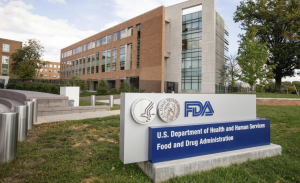FDA inspections are a pivotal moment for any 503B outsourcing facility. Unlike 503A pharmacies, which are primarily state-regulated, 503B facilities are held to Current Good Manufacturing Practices (CGMP) 21 CRF 210 & 211 and regularly inspected by the FDA. A successful inspection can bolster a facility’s credibility and market reach, while a failed one can lead to warning letters, product recalls, or even facility shutdowns.
In this blog, we’ll explore what 503B facilities need to know to prepare for FDA inspections, highlight common deficiencies, and offer proactive strategies for maintaining a state of readiness.
Understanding the Scope of an FDA Inspection
FDA inspections for 503B facilities are extensive and focus on compliance with 21 CFR Part 210 & 211 and (CGMP regulations). These inspections may include:
- Quality assurance and management systems
- Facility walkthroughs and evaluation of environmental controls
- Review of data integrity, batch records and standard operating procedures (SOPs)
- Personnel training and gowning practices
- Validation of equipment, processes, and cleaning procedures
- Microbiological monitoring and contamination control
- Supplier qualification, to name a few
The FDA typically provides little to no advance notice before an inspection, making inspection readiness essential.
Common Deficiencies Cited During Inspections
Over the years, the FDA has issued numerous, FDA 483 observations and warning letters to 503B facilities. Common issues include:
- Inadequate aseptic processing controls
- Lack of testing for sterile product lines
- Lack of facility and clean room qualifications
- Failure to validate sterilization methods
- Poor data integrity and documentation practices
- Incomplete environmental monitoring and poor processing environments
- Lack of proper cleaning validation
- Deficient complaint handling procedures
These deficiencies not only put patient safety at risk but also threaten the operational viability of the facility and increases drug shortages.
How to Prepare: A Strategic Framework
Preparation for FDA inspections should be built into the daily operations of a 503B facility. Here’s a structured approach:
- Conduct thorough internal audits and mock FDA audits: Simulate inspections to uncover gaps and train staff on inspection etiquette.
- Develop and Maintain Robust SOPs: Ensure SOPs are comprehensive, current, and implemented consistently.
- Validate: Equipment, processes, cleaning, and software systems must all be validated.
- Implement a Quality Management System (QMS): An effective QMS enables tracking of deviations, CAPAs, and change controls.
- Train Continuously: Ensure all employees understand their roles and responsibilities during an FDA inspection.
- Establish a Quality Culture: As example, for documentation, emphasize accuracy, completeness, and timeliness in all record-keeping activities.
Implementing a Culture of Compliance
Compliance should not be a one-time event tied to inspections—it should be embedded in the culture and the sites pharmaceutical quality system. Facilities that embrace continuous improvement, routine internal audits, and proactive risk management are better positioned to pass FDA inspections.
Leadership buy-in is critical. Management must support compliance initiatives with adequate resources, staff training, and a clear vision for quality excellence.
Final Thoughts
Preparing for an FDA inspection is a multifaceted process which requires ongoing commitment, attention to detail, and a strong quality mindset. By building a robust quality system and fostering a compliance-driven quality culture, facilities can not only pass inspections but thrive in a competitive and regulated environment.
Need help preparing for your next FDA inspection? Contact RCA today to get expert support from seasoned professionals who understand the intricacies of 503B compliance.





















 The FDA (Food and Drug Administration) conducts inspections to ensure that companies manufacture high quality products and comply with federal regulations regarding the safety, efficacy, quality and labeling of their products. Inspections serve to verify that manufacturing facilities follow Good Manufacturing Practices (GMPs), adhere to safety guidelines, and produce products that meet established standards. The legal authority for inspections is outlined in the Federal Food, Drug, and Cosmetic Act (FD&C Act)
The FDA (Food and Drug Administration) conducts inspections to ensure that companies manufacture high quality products and comply with federal regulations regarding the safety, efficacy, quality and labeling of their products. Inspections serve to verify that manufacturing facilities follow Good Manufacturing Practices (GMPs), adhere to safety guidelines, and produce products that meet established standards. The legal authority for inspections is outlined in the Federal Food, Drug, and Cosmetic Act (FD&C Act)